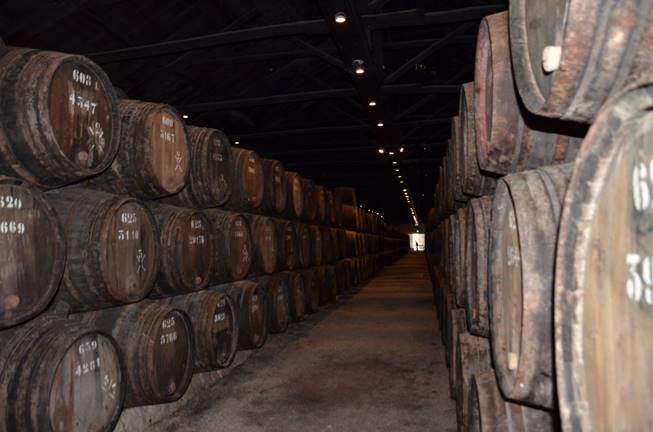The Douro Valley, the birthplace of Port, is one of the oldest wine regions in the world, and the only place legally able to produce “Port wine” — it was officially demarcated by the Marques de Pombal, an important Portuguese Prime Minister, in 1756. But, before the advent of roads and railways, the Douro wine region could only be reached one way: by boat. The history of Port transportation from the Douro Valley to the Atlantic coast is a colorful one, and an integral part of what made this iconic beverage world-famous.

Article by Ali Timpson © March 2020
Early River Transportation
Port was first transported by barco rabelo boats along the Douro River. These traditional Portuguese wooden cargo boats were specifically built to withstand the river’s strong currents, but the river itself required considerable changes until this method of transport was able to come to fruition. A huge waterfall on the Douro — naturally created by a cluster of large boulders — eliminated any possibility of sailing through to the river’s remote eastern reaches. In 1780 work commenced to remove these rocks, and by 1789, ships were able to sail freely through the river.
The Douro River was essential for the flourishing of the Port wine trade, wines were transported from the local vineyards to Port shipper lodges in Oporto, a vibrant coastal city. Some parts of the Douro were fairly treacherous and could only be navigated by the most skilled sailors. The barco rabelos were also built with lengthy steering oars, flat-bottomed hulls, and wide sails to allow the careful maneuvers needed to sail the rougher waters. Eventually, at least several hundred barco rabelos sailed the river to meet the increasing demand for port.
Initially, the largest vessels were able to carry between 70 and 100 casks of wine, (550-600 liters apiece). However, legislation passed in the 20th century limited this to 50 casks, as carrying any more made large barco rabelos vulnerable to accidents. Even when the railway became a competing mode of transportion in 1887, barco rabelos remained a popular choice. By 1961, just six barco rabelos navigated the river and when the Douro had dams installed for hydro-electric power, the quantity lessened. 1964 is thought to be the last year that any boats were used commercially in the region. However, as the roads in the Douro Valley continued to expand and slowly improved, road transportation gradually became the norm towards the latter quarter of the twentieth century.
Efficient, Modern Transportation
Nowadays, Port is always transported by truck to Vila Nova de Gaia. Traditionally, Port is made in the Douro Valley, where it’s stored for at least one winter — the colder climate allows the flavors to mellow and marry, creating Port’s signature sweetness. The Port is loaded into trucks and transported to Port-wine lodges in Gaia, where the warmer weather and proximity to the ocean is conducive to the aging process. When it comes to transportation, the process is continually refined to make it as efficient as possible. The entire supply chain — from the growers, vineyards, and trucking companies — is synchronized in planning, processing, and communications.
In particular, shuttle drop programs boost transport efficiency by making it possible for trucks to deliver full loads of grapes to wineries, immediately pick up an empty trailer, and return straight to the vineyard for the next collection. Wait times are therefore greatly reduced. Moreover, GPS tracking provides real time visibility, ensuring drivers arrive on time without losing any trailers.
Port transportation has a rich and colorful history. Traditional barco rabelo boats made it possible for the Port industry to take off and flourish worldwide. As civilization advanced, rails and roads slowly took over to transport the Port we know and love today.
A little known fact is that prior to the dams being built up river in the three sub-regions of the Douro Valley, the barco rabelos had to be walked up stream and were guided by extensive teams of men and oxen that worked very hard to muscle the boats against the strong currents. It took days to get the boats back to where they were needed and to go to the Douro Superior, or as far as Pocinho, could take as much as a week. This was no easy task!


Leave A Comment
You must be logged in to post a comment.